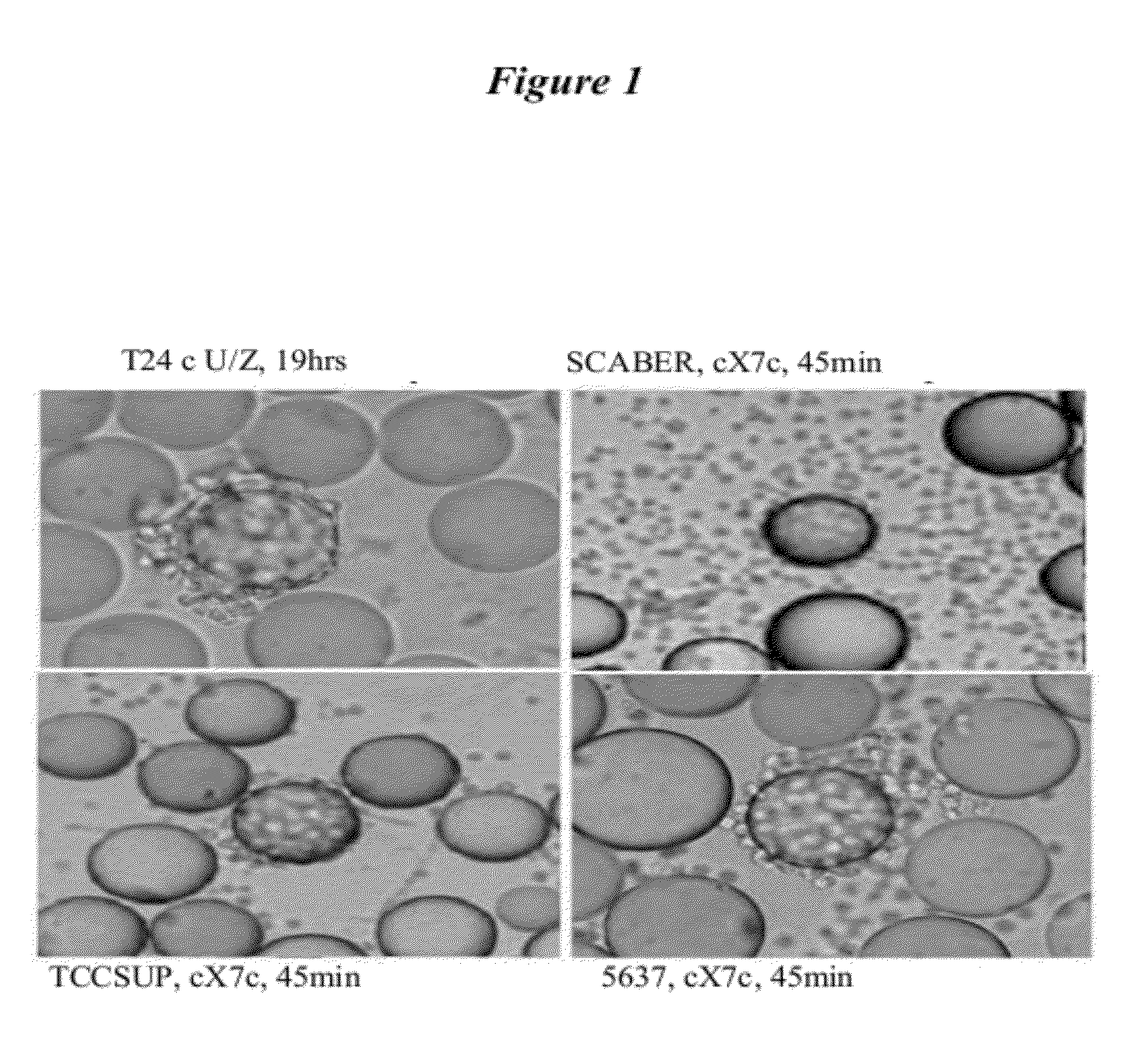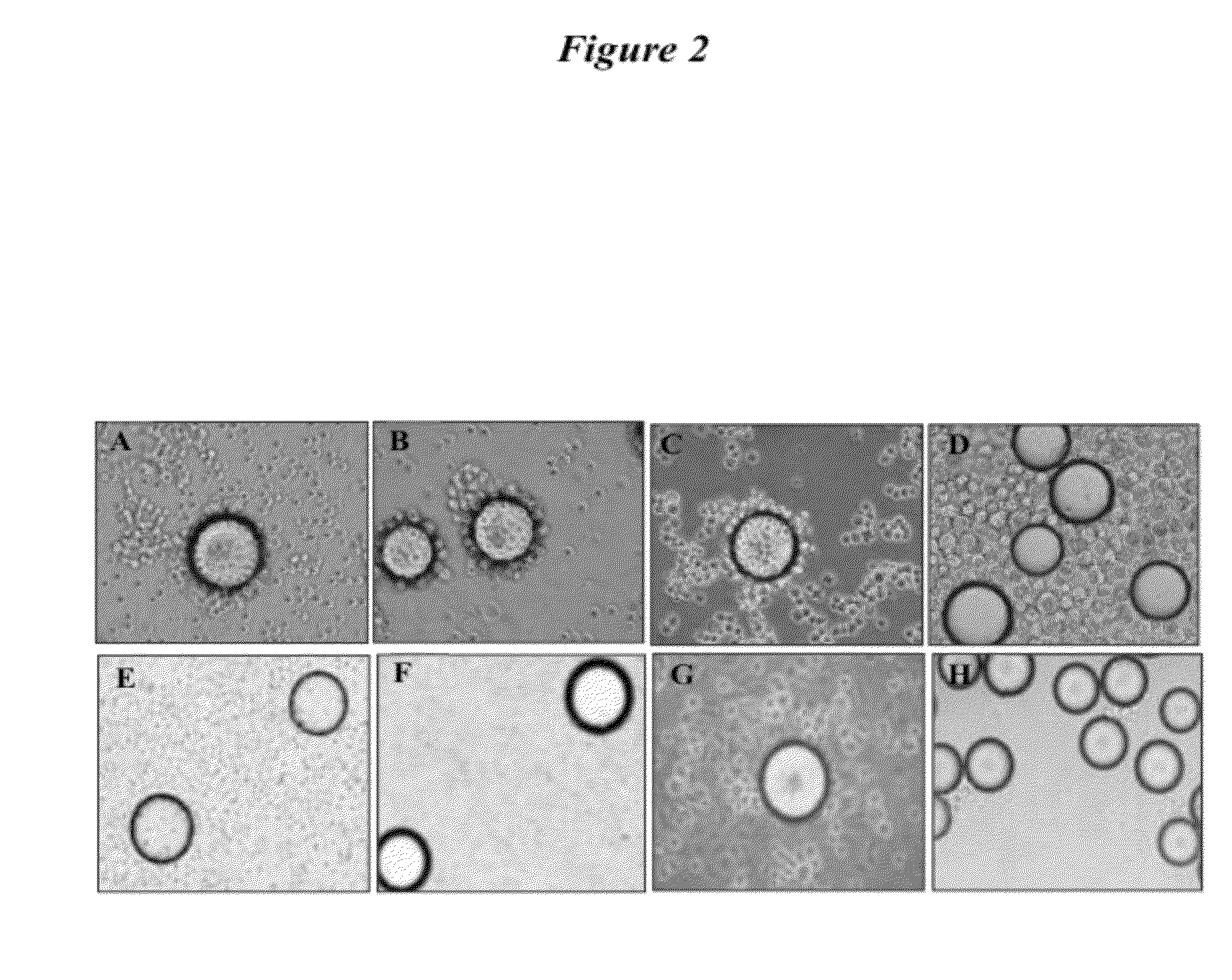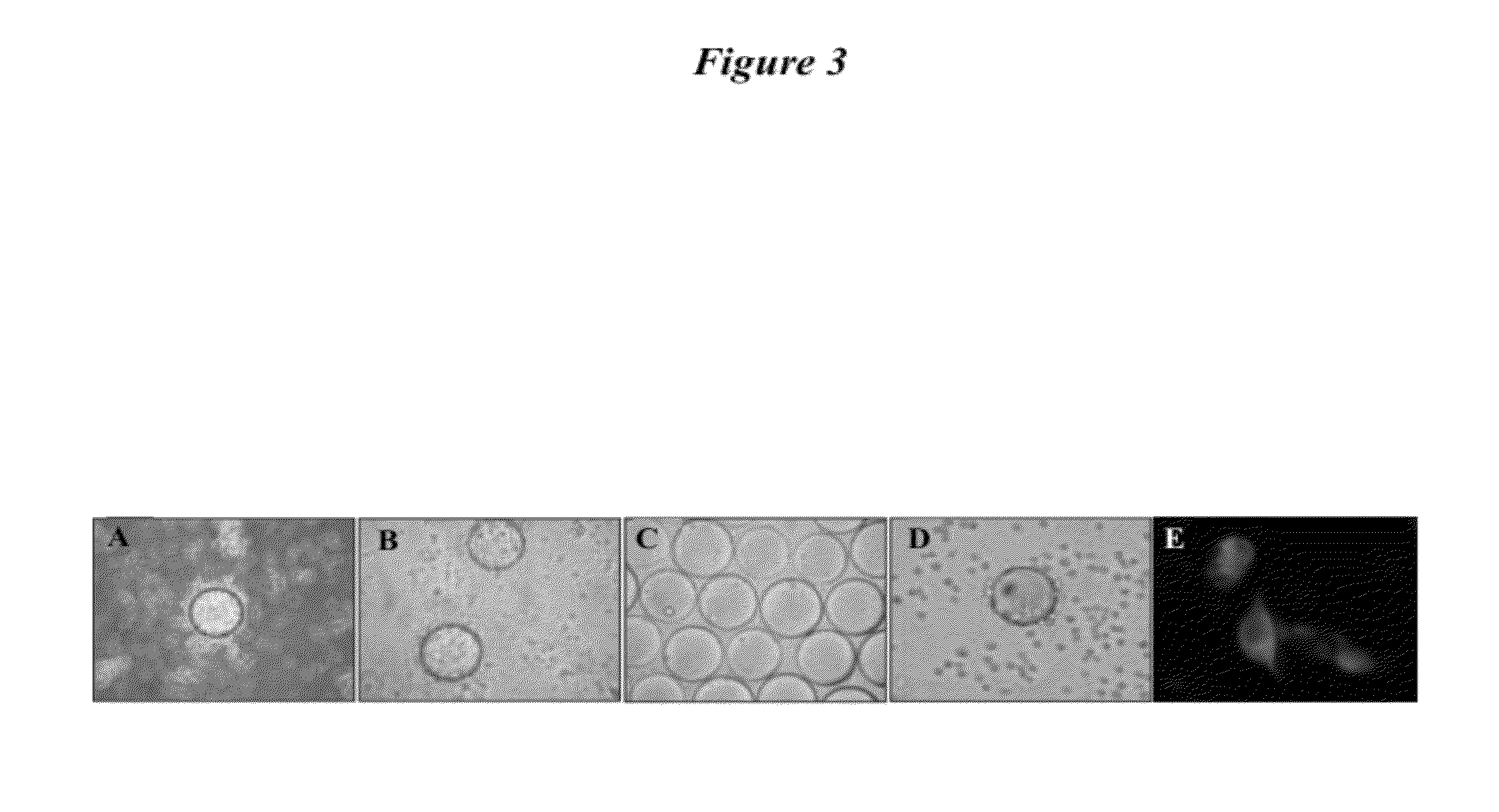Bladder cancer specific ligand peptides
a ligand and peptide technology, applied in the field of peptides for bladder cancer, can solve the problems of inconvenient and costly cystoscopy, and achieve the effects of reducing the risk of cystoscopy, and improving the effect of cytotoxicity
- Summary
- Abstract
- Description
- Claims
- Application Information
AI Technical Summary
Problems solved by technology
Method used
Image
Examples
example 1
Discovery of Bladder Cancer Specific Ligands
Materials and Methods
Synthesis of the Initial and Focused OBOC Libraries.
[0174]OBOC libraries were synthesized on solid phase TentaGel S NH2 resin (Rapp Polymere Gmbh, Germany) by a “split-mix synthesis” method (Lam, et al., Nature, (1991) 354: 82-84; Lam, et al., Chem Rev, (1997) 97: 411-448; and .Peng, et al., Nat Chem Biol, (2006) 2: 381-389). The peptide moiety of the peptidomimetic was synthesized by standard solid-phase peptide synthesis techniques using 9-fluorenylmethoxycarbonyl (Fmoc) chemistry and N-hydroxybenzotriazole (HOBt) / N,N′-diisopropylcarbodiimide (DIC) coupling. And, the completion of coupling was confirmed with a ninhydrin test. The beads were stored in 70% ethanol at 4° C. until use.
Cells
[0175]Four bladder cancer cell lines including 5637 (HTB-9), SCaBER, TCCSUP (HTB-5), and T24 (HTB-4) were purchased from the American Type Culture Collection (Manassas, Va.). The isolation, characterization and maintenance of normal ur...
example 2
Confirmation of Canine Bladder Cancer Animal Model
[0199]To determine the binding of PLZ4 to canine TCC cell lines, whole cell binding assay was performed. PLZ4 was synthesized on TentaGel S NH2 resin beads (Rapp Polymere Gmbh, Germany) (Pegram, et al., J Clin Oncol (1998) 16:2659-2671), and incubated with single suspensions of five different canine carcinoma cell lines including K9TCC-PU, K9TCC-PU-A×A, K9TCC-PU-In, K9TCC-PU-A×C, and K9TCC-PU-Nk (kindly provided by Deborah Knapp at Purdue University, West Lafayette, Ind., USA) at 106 cells / ml. The negative control was normal urothelial cells obtained from dogs that were euthanized due to non-bladder-related disorders. Human bladder cancer cell line, 5637 were served as the positive control. If PLZ4 bound to cells in suspension, then the bead surface was covered with cells. Over 95% of the bead surface was covered with 5637 and K9TCC cells (FIG. 7A-a and b, respectively). In contrast, there was no cell binding and round smooth bead su...
PUM
| Property | Measurement | Unit |
|---|---|---|
| diameter | aaaaa | aaaaa |
| bead diameter | aaaaa | aaaaa |
| pH | aaaaa | aaaaa |
Abstract
Description
Claims
Application Information
 Login to View More
Login to View More - R&D
- Intellectual Property
- Life Sciences
- Materials
- Tech Scout
- Unparalleled Data Quality
- Higher Quality Content
- 60% Fewer Hallucinations
Browse by: Latest US Patents, China's latest patents, Technical Efficacy Thesaurus, Application Domain, Technology Topic, Popular Technical Reports.
© 2025 PatSnap. All rights reserved.Legal|Privacy policy|Modern Slavery Act Transparency Statement|Sitemap|About US| Contact US: help@patsnap.com



